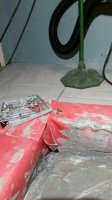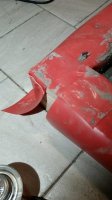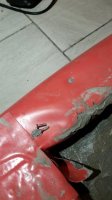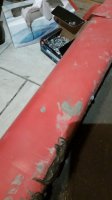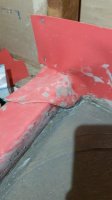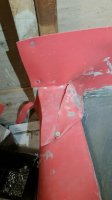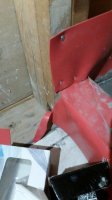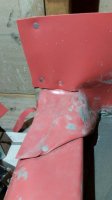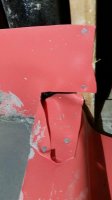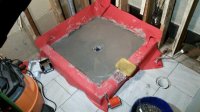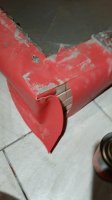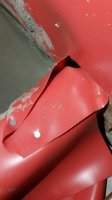It does not meet industry standards for at least a couple of reasons:
- any seams should be sealed, whether by use of curb corners, or by overlapping and cementing, or cementing on a strip
- it should extend at LEAST 3" above the top of the curb along the walls with no fasteners below after the liner and walls are up
- there should be blocking between the joists to support the liner material. It's nice if the corners are notched to account for the folds so the CBU will lay flat when installed over the top of it, otherwise, the material will bow out making setting the tile a pain when trying to make them all in plane.
I can't tell if the liner is sitting flat on the floor or not, but given how it looks, it may be. Code requires the waterproofing (tile is not waterproofing) to be sloped to the drain. Then, the setting bed is applied in a parallel layer, which, because the bottom is sloped, the top will be.
It's a good idea to have put the lath for covering the curb on before placing the setting bed, otherwise, it's impossible to tie that setting bed to the mortar needed to embed the lath on the curb. There should not be any fasteners on the inside or top of the curb...only on the outside, and preferably low to the bottom. Many people end up screwing cement board on the curb...this is in direct conflict with the waterproofing and plumbing codes and industry standards.
If there's no preslope underneath the pan, it's a do-over. While the lack of a preslope may not make it leak, it does mean that after time (and it doesn't take as long as you might think), the liner will then start to accumulate stagnet water and eventually, keep the tile and grout wet, and lead to smells.
For constructing a tiled shower, the best forum I've found to evaluate a build is
www.johnbridge.com Lots of tile pros over there.
The tile council of North America publishes an industry spec document on how to tile things...this guy probably doens't have a clue that it exists, or how to do it to those specs. So, both the TCNA guidelines and maybe the plumbing code may have been broken so far.
Make sure that a full flood test is done, at least overnight, once the liner is installed. There should be no leaks. It's harder with the mortar on top of the liner now...it should be done prior to that, and only if the liner is sitting on a preslope. When pulling the drain after the flood test, all of the water should run out the drain without puddles or leaks left over.
